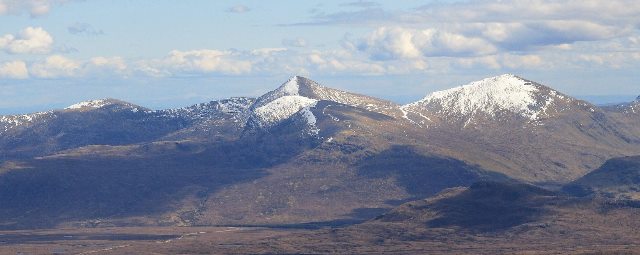Much of the area is covered by environmental designations. There are 12 Sites of Special Scientific Interest (SSSI), 3 Special Areas of Conservartion (SAC), 2 Special Protection Areas and part of the area is in the Wester Ross National Scenic Area.
Heather moorland (61%) and blanket bog and peatlands (15%) are the main habitats, however the plant community with the greatest conservation value is the Atlantic Oak Woodland. This occurs on the north shore of Loch Maree. As well as the trees it is rich in mosses, liverworts, lichens and ferns.
Growing concerns about climate change have come to recognise the importance of peatland and woodlands as valuable carbon stores. 6% of the group area is covered by woodland, mainly around the margins, just over a third of the woodland is considered to be native or nearly native. Over half of the area is considered to be priority peatland, with all or most of the vegetation indicating priority peatland habitats, valuable as a massive carbon store. Carbon can be locked in upland peat for thousands of years.

